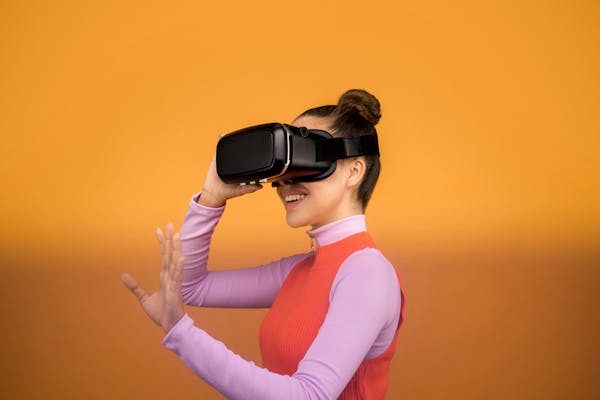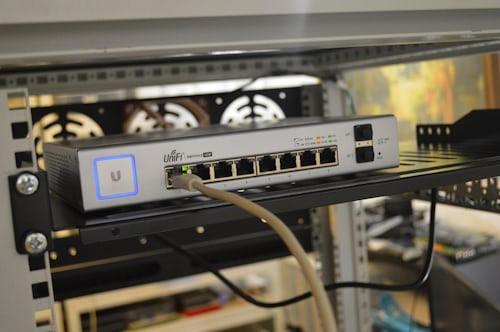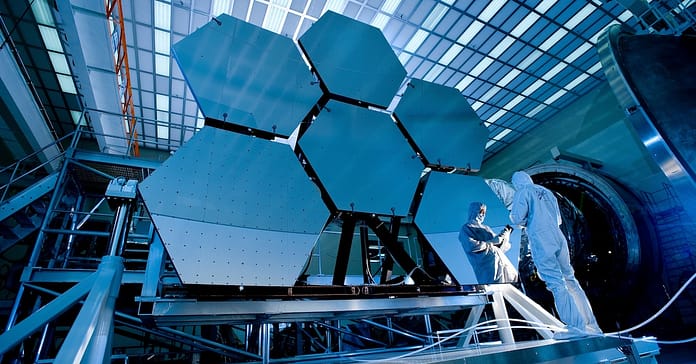Top 15 Emerging Technology Trends to watch in 2023 and beyond
The technology of today is developing quickly, which both speeds up change and development and accelerates it. But, the COVID-19 pandemic has resulted in many changes this year, and as a result, IT workers now understand that their work will alter in the contactless world of the future.
Artificial intelligence will be more popular in 2023 as machine learning and natural language processing improve. Using this technique, artificial intelligence will be able to comprehend us better and carry out more difficult jobs. Future living and working habits will alter as a result of 5G, according to estimations.
How does that make you feel? It entails staying current with both current and forthcoming technical advancements. It also incorporates a covert eye on the future to identify the skills you’ll need to have in order to find steady employment in the future and even figure out how to get there. The majority of the global IT workforce is relaxing and working from home as everyone succumbs to the global epidemic.
Here are the top 15 emerging technology developments to look out for in 2023 if you want to optimize your time at home and perhaps snag one of the new professions created by them. These trends include:
The top new technology trends for 2023 are listed below.
1. Artificial Intelligence and Machine Learning
2. Robotic Process Automation (RPA)
3. Quantum Computing
4. Virtual Reality and Augmented Reality
5. Internet of Things (IoT)
6. 5G
7. Smart Glasses
8. Li-Fi
9. Internet of Behaviours
10. DevOps
11. 3D Printing
12. Terabyte Internet Speed
13. Brain Interface Devices
14. Energy Storing Bricks
15. Sea Water Fuel
1. Artificial Intelligence (AI) and Machine Learning

A decade ago, artificial intelligence, or AI, began to increase in popularity. In 2022–2023, it will still be one of the top technologies since it hasn’t slowed down. AI is continually changing, and more uses for this cutting-edge technology continue to arise. The most widely used AI applications now include voice assistants like Siri and Alexa, navigational software, picture and speech recognition, and many others.
To get knowledge and identify triggers, businesses are attempting to utilize AI to evaluate consumer and business interactions. They would be able to better allocate resources to various initiatives and forecast demand for services like hospitals or tourism.
A huge need for trained workers is being generated by the deployment of machine learning, a subset of artificial intelligence. By 2025, AI, machine learning, and automation are expected to provide 9% of all new employment in the United States. These positions will include robot monitors, data scientists, automation specialists, and content curators.
Your ability to master AI and machine learning can help you land opportunities in the:
· AI Research Scientist
· AI Engineer
· Machine Learning Engineer
· AI Architect
2. Robotic Process Automation (RPA)

Similar to AI and Machine Learning, the technology known as robotic process automation, or RPA, is automating jobs. Software automation of business processes, such as application interpretation, transaction processing, data handling, and even email answering, is referred to as RPA. RPA automates routine processes that formerly required human labour.
Although Forrester Research projects that RPA automation would put 230 million or more knowledge workers, or around 9% of the global workforce, in danger of losing their employment, RPA is also changing and generating new occupations. Less than 5% of vocations, according to McKinsey, can be fully automated, while over 60% can be slightly automated.
For IT professionals looking to the future and seeking to understand the most current technical changes, RPA offers a wide range of career chances, including those for developers, project managers, business analysts, solution architects, and consultants. Furthermore, these jobs pay handsomely. RPA development is the newest technological trend that you need to pay attention to since an RPA developer may earn a good income annually!
By mastering RPA, you can get well-paying professions like:
· RPA Developer
· RPA Analyst
· RPA Architect
3. Quantum Computing

Quantum computing is a further emerging technology that will enhance business operations and industrial value chains. By 2035, quantum computing might be worth almost $700 billion, according to McKinsey. Quantum computing has the potential to advance technology, boost the creation of new medicines, and make encryption easier to break.
Information is expressed as quantum bits using the quantum state of subatomic particles in quantum computing (qubits). Through attachments, qubits may communicate with one another. Additionally, it may simultaneously contain several values (Superposition). When compared to traditional processing, quantum computing is faster and uses a lot less memory.
4. Virtual Reality and Augmented Reality

Since more than ten years ago, virtual and augmented reality have gained popularity. While virtual reality immerses the user in a new universe, augmented reality enhances the user’s current surroundings. Virtual Ship, a simulation program, is used to train ship captains for the US Navy, Army, and Coast Guard even though its usage has typically been linked to gaming and social media filtering.
Almost 14 million AR and VR devices were sold in 2019. By 2022, it is predicted that the global market for this emerging technology would grow to $209.2 billion, suggesting an increase in job opportunities.
By 2022, it’s expected that AR and VR will have a considerably deeper level of integration into our daily lives. They have a lot of possibilities and might be utilized for post-injury rehabilitation, marketing, care, entertainment, and education. To provide their customers with fresh, engaging experiences, advertisers and companies frequently employ it.
To start a career in virtual reality or augmented reality, you don’t need a lot of specialized training. You may get work in this industry with ease if you have a skill set that includes optics in addition to some basic programming knowledge and a forward-thinking attitude.
5. Internet of Things (IoT)

It is one of the most encouraging advancements of the 10 years. Today, a variety of ‘things’ can connect to the internet because they are Wi-Fi capable. A network of various linked gadgets is known as the Internet of Things. Without human involvement, devices in the network may exchange messages, gather data, and move it from one device to another.
There are countless real-world Internet of Things (IoT) uses, such as employing smart gadgets that link to your phone to track activities, monitoring house doors from a distance, or turning on and off programs. Businesses utilize IoT for a variety of purposes, including forecasting when a gadget will break down so that preventative steps may be done before it’s too late and monitoring activities in distant areas from a central hub.
Over 50 billion devices are expected to be linked to the Internet of Things by the year 2030. In the following two years, it is predicted that global investment in this newest technology will amount to $1.1 trillion. IoT is now in its beginnings but will grow quickly in the next few years. It requires an understanding of the principles of AI, machine learning, information security, and data analytics.
6. 5G Technology

The potential for 5G technology to transform how we see the internet environment. By allowing quicker internet surfing, the use of data-driven applications, and an increase in capacity for live streaming, 3G and 4G technologies completely changed how people interacted with mobile devices.
By incorporating AR, VR, and improved cloud-based gaming, 5G intends to transform our virtual interactions. To simplify and monitor processes, it will also be employed in factories and businesses. In the form of real-time HD cameras, 5G offers applications for smart retail experiences, smart grid control, and road safety and rule execution.
Worldwide, telecom businesses are developing, 5G-ready services and equipment. The technology was introduced and launched in a few regions in 2020, with a task scheduled in 2022. Although the introduction of 5G has been put off for some time, it is expected to swiftly spread over the world and into everyone’s daily lives.
7. Smart Glasses

Smart glasses are head-mounted displays (HMDs) that may be used and add important features and information to what the wearer would typically learn from the outside world.
The way, we use technology also evolves with the times. There has been a significant advancement in maximizing technology for convenience, starting with rotary dial phones and continuing through the period of smartwatches and current smart eyewear.
Smart glasses are positioned to be among the newest major technologies as the Metaverse develops. However, let’s first define smart glasses.
The main function of eyeglasses has been to repair, restore, and enhance eyesight to 20/20 or near to it for generations. By providing the opportunity to bring the technology in our smartphones and computers directly to our eyes and ears, smart glasses represent another leap in convenience.
The gadgets, worn like ordinary glasses, let you view and reply to calls, texts, and emails from your smartphone, as well as listen to music, utilise navigation, converse with a voice assistant, and do a lot more.
8. Li-Fi

LiFi, commonly known as “Light Fidelity,” is a wireless optical networking system that transmits data using light-emitting diodes (LEDs). Professor Harald Haas demonstrated LiFi at the TED (Technology, Entertainment, Design) Global Talk on Visible Light Communication in 2011. (VLC).
VLC, like Wi-Fi, employs light as a medium for high-speed communication and adheres to the IEEE standard IEEE 802.15.7. IEEE 802.15.7 is a wireless communication technology-based standard that is high-speed, bidirectional, and fully networked, akin to Wi-IEEE Fi’s 802.11.
9. Internet of Behaviours

This is one of the most rapidly increasing industrial trends, with applications in practically every business. IoB is a technique that collects data from internet-connected consumer devices. The massive amounts of data collected are then examined and recorded to better understand human behaviour.
This new technology will play a big role in the Big Data, analytics, development, and predictive analytics sectors as more devices connect to the internet and more individuals use digital technology. You may have heard of the Internet of Things (IoT) technology, which consists of a physical device network of gadgets connected to the internet, each of which may interact with the others. Automobiles and home appliances, for example, will become smart and connected to the network in the future.
10. DevOps

DevOps integrates an organization’s development and operations teams to assist improve and automate the software development process. Within a company, DevOps has two primary applications:
· Reducing software delivery cycles
· Improving overall product standards
Enterprises may provide faster software upgrades and feature delivery to consumers by encouraging collaboration between operations and development teams. It also implies that businesses will notice fewer mistakes and higher product quality.
11. 3D Printing

3D printing has emerged as a critical tool for prototyping, particularly in the industrial and healthcare industries. 3D printers enable you to produce a physical thing! This low-cost invention is, without a doubt, here to stay. Brands and organizations in the healthcare, data and industrial sectors require 3D printing of their goods, which has increased the demand for employees with expertise in Machine learning, 3D printing, modelling, and AI.
12. Terabyte Internet speed

We change along with the globe and the Internet. That is why, in all of our testing markets, we are implementing a terabyte data package as part of our Internet data experiments.
A terabyte is a massive quantity of data. It’s significantly more than the majority of our clients would ever need in a month. Today, more than 99 per cent of our clients will never use a terabyte. Our average user consumes roughly 60 gigabytes of data each month, which is significantly less than a terabyte (in fact, 940 gigabytes less), or less than 6% of a terabyte.
The world’s fastest internet speed, which can download the entire Netflix catalogue in less than a second, has been measured at an extraordinary 178 terabits per second (Tb/s). New modulation techniques for light have been created by engineers in the UK and Japan, enabling significantly broader bandwidths than previously possible.
13 Brain Interface Device

A BCI is, to put it simply, a link between your brain and an outside device. It is getting simpler to analyze brain signals and extract relevant brain patterns using many censors and sophisticated algorithms, which may then be recorded and examined by a non-invasive device. Because of this, people may operate machines directly without being constrained by their bodies.
BCI technology was first created to enable paralyzed persons to direct supportive gadgets with their thoughts. But every day, new use cases are discovered. A growing number of tech businesses are focusing on the brain to bridge the human brain with an interface for computers. The metaphorical race to develop BCIs that are affordable, portable, and used by everyone has begun.
Although BCI technology is in an exciting phase right now, there are many ethical issues to take into account. Having a permanent brain implant is not something that only some people feel comfortable with. Fortunately, there are also wearable BCIs available that don’t involve surgery or brain implants.
14. Energy Storing Bricks

Hydroelectric dams, rechargeable batteries, thermal storage (including molten salts, which may efficiently store and release extremely large amounts of heat energy), compressed air energy storage, flywheels, and cryogenic systems are all examples of energy storage media. However, with the rapid advancement of technology, energy can now be stored in bricks. Let’s have a look at how.
Red bricks, one of the world’s most affordable and well-known building materials, may be turned into energy storage devices. According to a report published in Nature Communications, this implementation of future technology is an effective approach to storing energy. These smart bricks’ are charged to store electricity, similar to a battery until it is required to power gadgets.
After being used as an artefact for thousands of years, fired brick has seldom been put to use in other ways. Brick walls and structures already take up a significant portion of space that may be better utilized for another purpose.
15. Sea Water Fuel

Scientists have been working on seawater-to-fuel technology for a while now. Using the onboard nuclear reactor and seawater’s carbon dioxide and hydrogen, they can produce a liquid fuel that can run a jet engine. By using this technique, aircraft carriers could operate continuously and stop depending on tanker ships to refuel them.
However, creating catalysts that can efficiently turn these common chemicals into jet fuel is a time-consuming and expensive procedure. We hope that we define these technologies very well.
Read Also: What is The Difference Between Technology And Technological Change?

